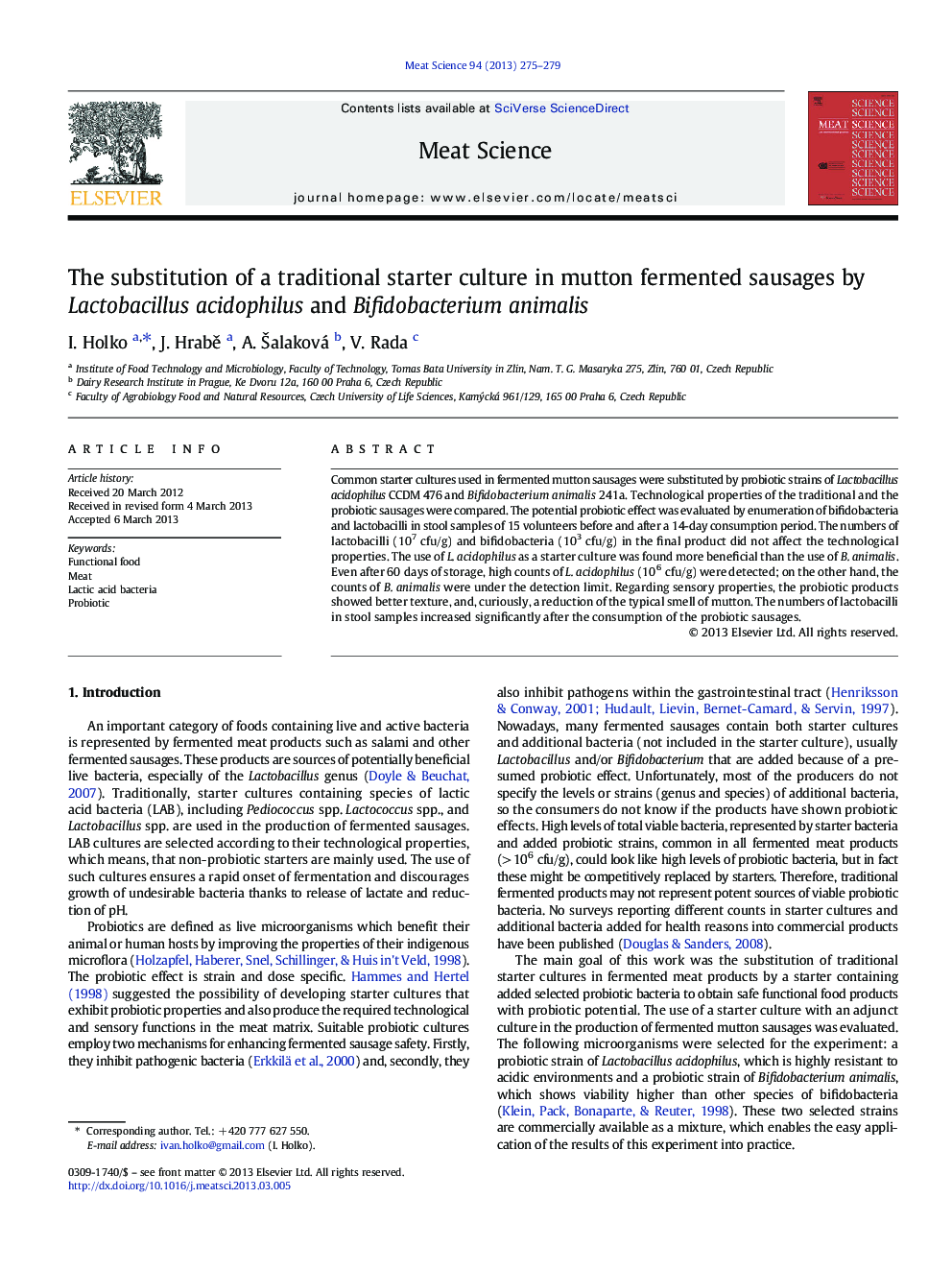| Article ID | Journal | Published Year | Pages | File Type |
|---|---|---|---|---|
| 2450051 | Meat Science | 2013 | 5 Pages |
•The use of L. acidophilus was found more beneficial than the use of B. animalis.•High counts of L. acidophilus (106 cfu/g) were detected after 60 days of storage.•B. animalis counts were under detection limit after 60 days of storage.•Typical smell of mutton was significantly reduced in probiotic sausages.•Consumption of probiotic sausages increased lactobacilli counts in stool samples.
Common starter cultures used in fermented mutton sausages were substituted by probiotic strains of Lactobacillus acidophilus CCDM 476 and Bifidobacterium animalis 241a. Technological properties of the traditional and the probiotic sausages were compared. The potential probiotic effect was evaluated by enumeration of bifidobacteria and lactobacilli in stool samples of 15 volunteers before and after a 14-day consumption period. The numbers of lactobacilli (107 cfu/g) and bifidobacteria (103 cfu/g) in the final product did not affect the technological properties. The use of L. acidophilus as a starter culture was found more beneficial than the use of B. animalis. Even after 60 days of storage, high counts of L. acidophilus (106 cfu/g) were detected; on the other hand, the counts of B. animalis were under the detection limit. Regarding sensory properties, the probiotic products showed better texture, and, curiously, a reduction of the typical smell of mutton. The numbers of lactobacilli in stool samples increased significantly after the consumption of the probiotic sausages.
